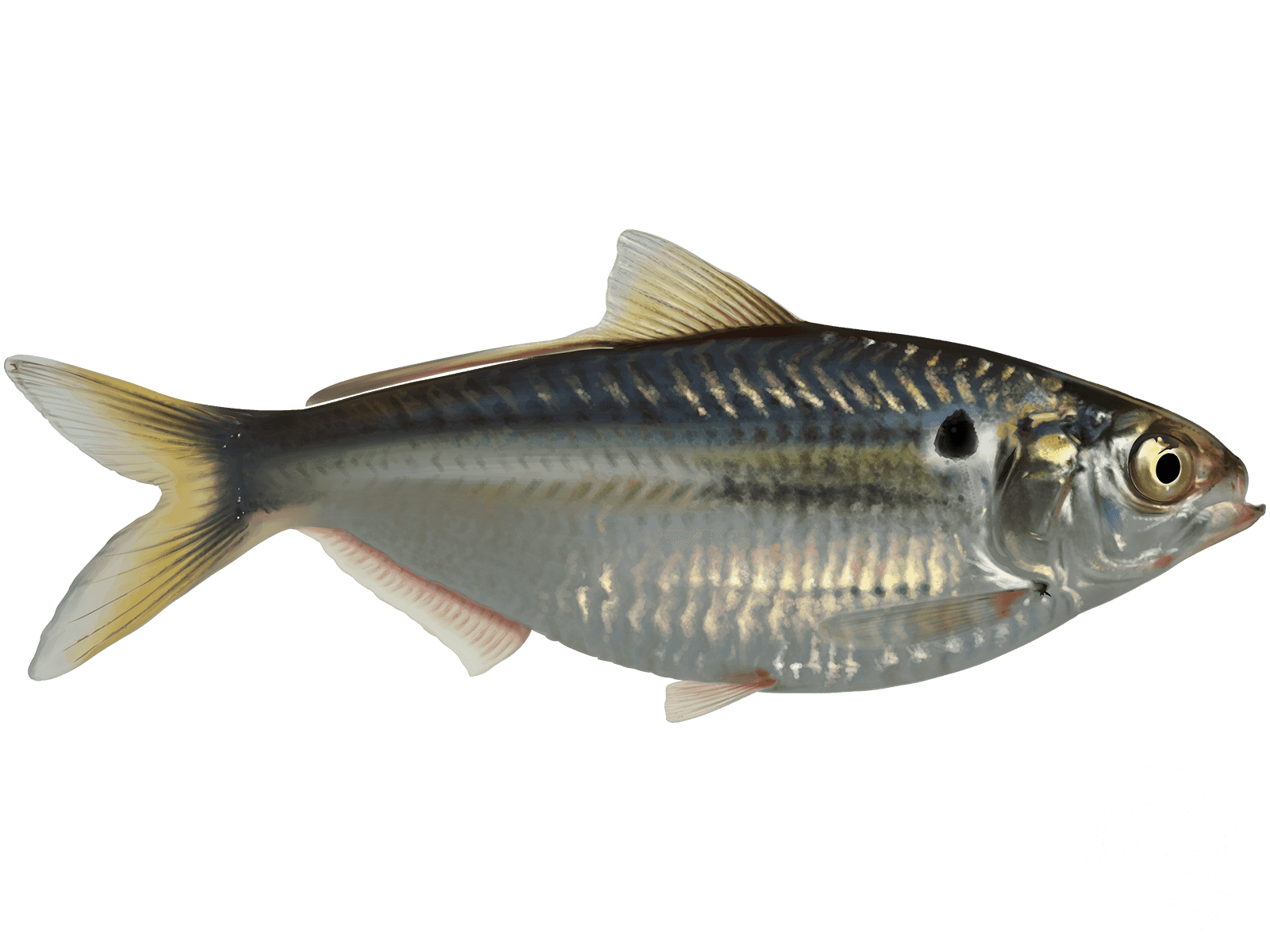American Gizzard Shad

Species Details
Dorosoma Cepedianum
Clupeidae
Clupeiformes
Lake, Shallows, Muddy
1 - 2 lbs.
8" - 20"
American Gizzard Shad (Dorosoma cepedianum)
Fish Description
The American Gizzard Shad (Dorosoma Cepedianum) can easily be identified through its plump, oblong body that has a silvery-green color on top and gradually fades to plain silver on the sides and belly. Aside from its body shape and coloration, distinguishing characteristics of the fish include a small toothless mouth, black spots behind both gills, small, thin, and uneven scales, and a deeply forked tail fin.
Although they can grow as long as eighteen to even twenty inches long, most are often in the range of eight to fourteen inches.
Diet
The American Gizzard Shad is named as such because it has a gizzard (a sack-like organ filled with rock or sand) connected to the intestine that helps the fish digest its food. The fish is an omnivore and a filter feeder, meaning, it pretty much eats anything that can fit in its small mouth from planktons, algae, and even some small insects. The fish is also known for its insatiable appetite that, in many instances, actually cause zooplankton populations to collapse in the ecosystems they’re living in, which, as you can imagine, can be quite harmful to the overall health of the said ecosystem.
American Gizzard Shad Interesting Facts
- The biggest American Gizzard Shad ever caught measures close to twenty inches and weighs two pounds and two ounces. The record fish was caught by angler Shane Doherty in Vernon County, Missouri.
- American Gizzard Shads aren’t targeted for human consumption, rather, to be used as bait for other fish species. The fish is often caught and sold as a basic cut or live bait in fishing shops.
- They were introduced into many freshwater systems across the country to be a food source for a lot of gamefishes.
- Due to the species tolerance to different environments, the fish has actually become a problem in the water systems it was introduced in because it can reproduce exponentially higher than most native fishes. Also, its notorious feeding habits cause zooplankton populations (an essential part of an underwater ecological system) to drastically decline.
- It is also one of the main reasons why populations of some more valuable gamefishes have declined as finding food has become more competitive.
Fishing Techniques
As earlier mentioned, this fish is usually used for bait. You can use them when fishing for more valuable game fish like trout, walleyes, catfish, stripers, and a lot more. And though its smell can be quite repugnant to us humans, its foul fishy odor is actually irresistible for most gamefishes, making the shad quite an effective and thus, valuable baitfish.
If you’re thinking of catching an American Gizzard Shad to be used as bait, you may want to use a cast net for you to be able to catch several at a time. If you prefer to use a rod-and-reel, a flasher rig is a sure-fire way to go as it’s equipped with small hooks on the end of the rig’s several dropper lines. This can also be quite effective in catching several of these small baitfish simultaneously.
Habitat and Distribution
American Gizzard Shads originally came from the mid to north-eastern part of the country, but due to the introduction of the species to various water systems, they can now be found pretty much anywhere—from south of Canada around the Great Lakes, all the way down to Florida.
Also, they mainly live in large lakes, reservoirs, swamps, and even in floodwater pools. They can, however, also thrive in the brackish waters of bays and estuaries. You may also find them in great abundance at the bottom of lakes and rivers that are mostly soft-bottomed, muddy, or rocky. They are a small fish of the herring family that is usually seen swimming in schools. The fish is a popular baitfish often used by anglers to catch different types of gamefish like bass, walleyes, and trout.







